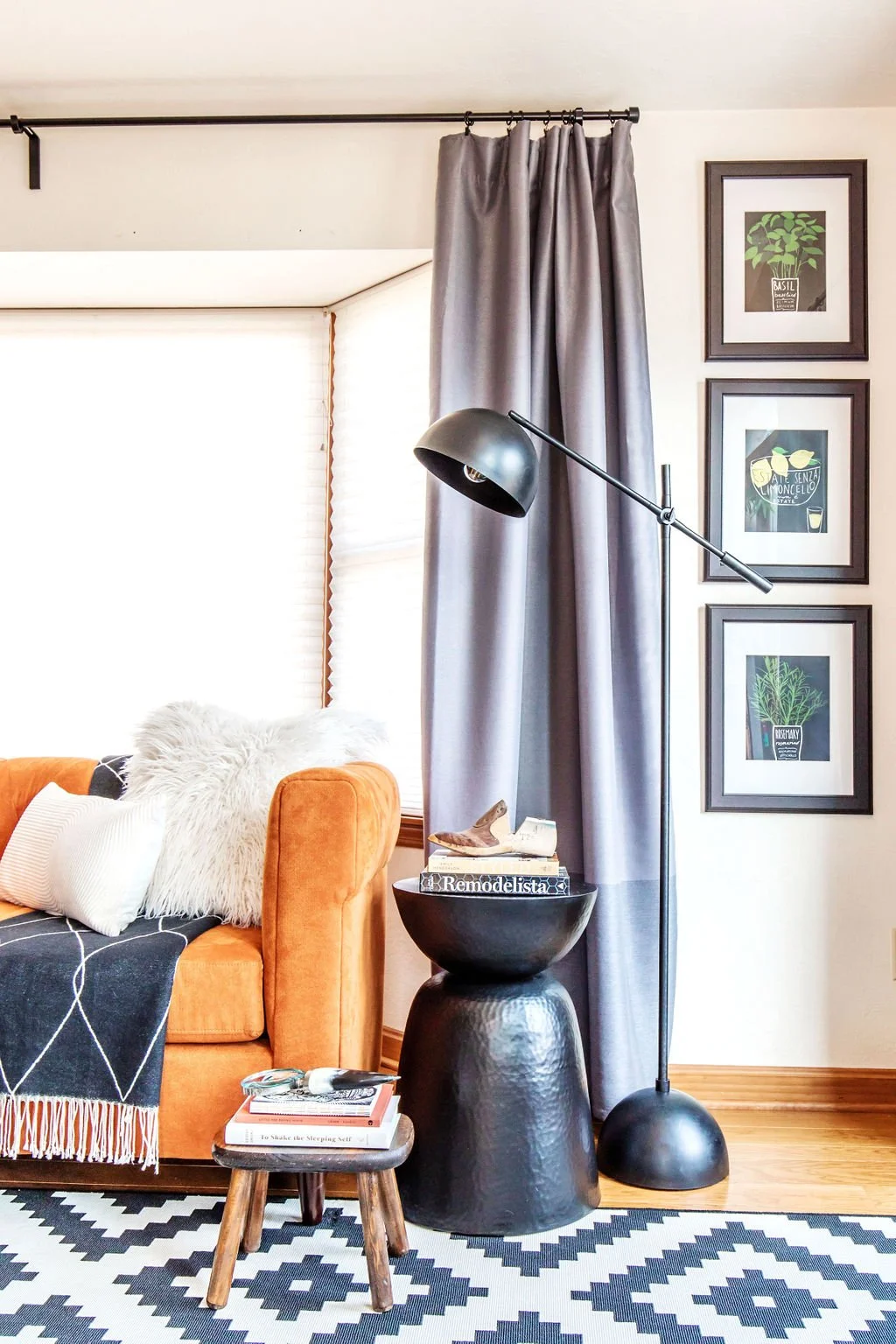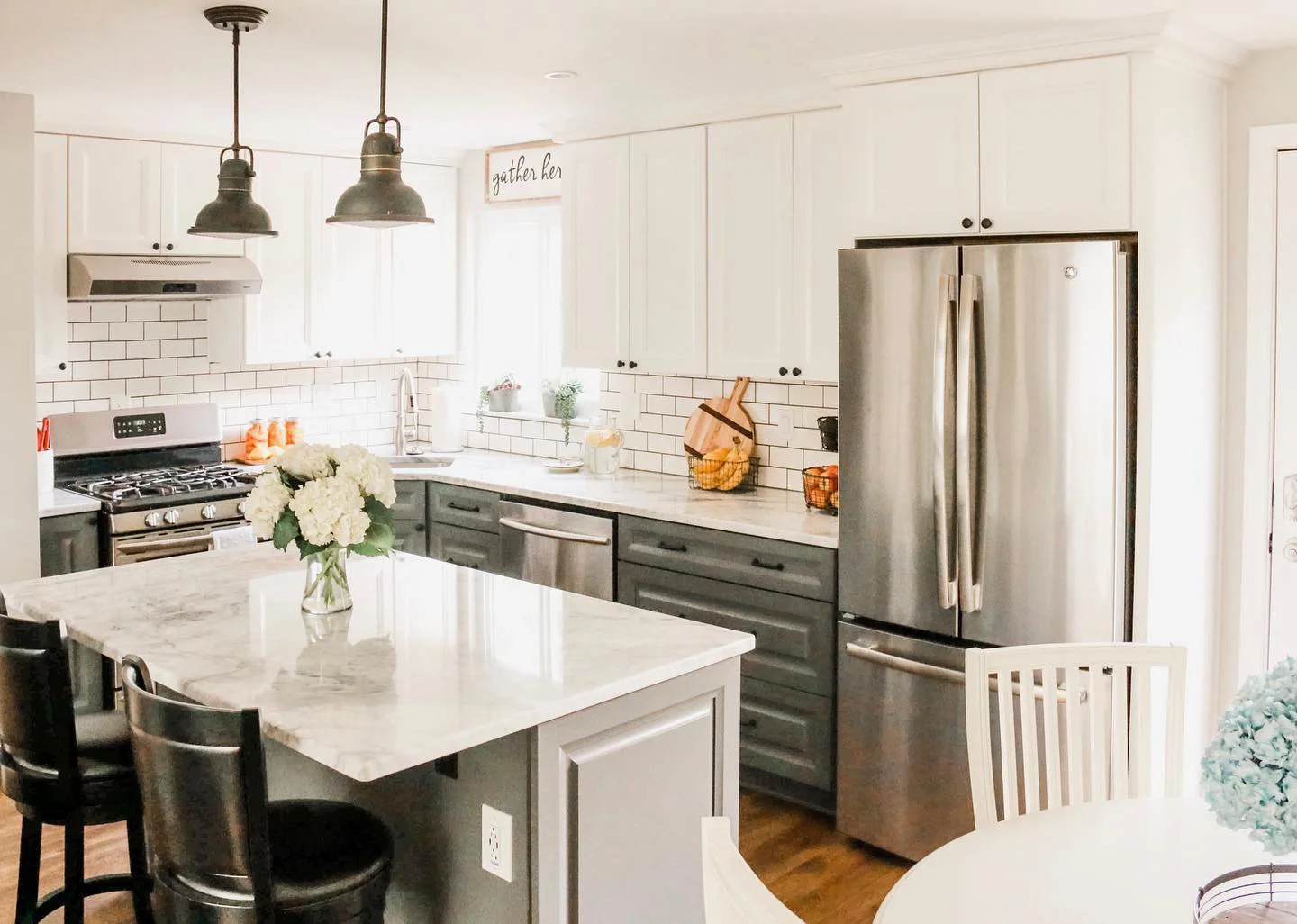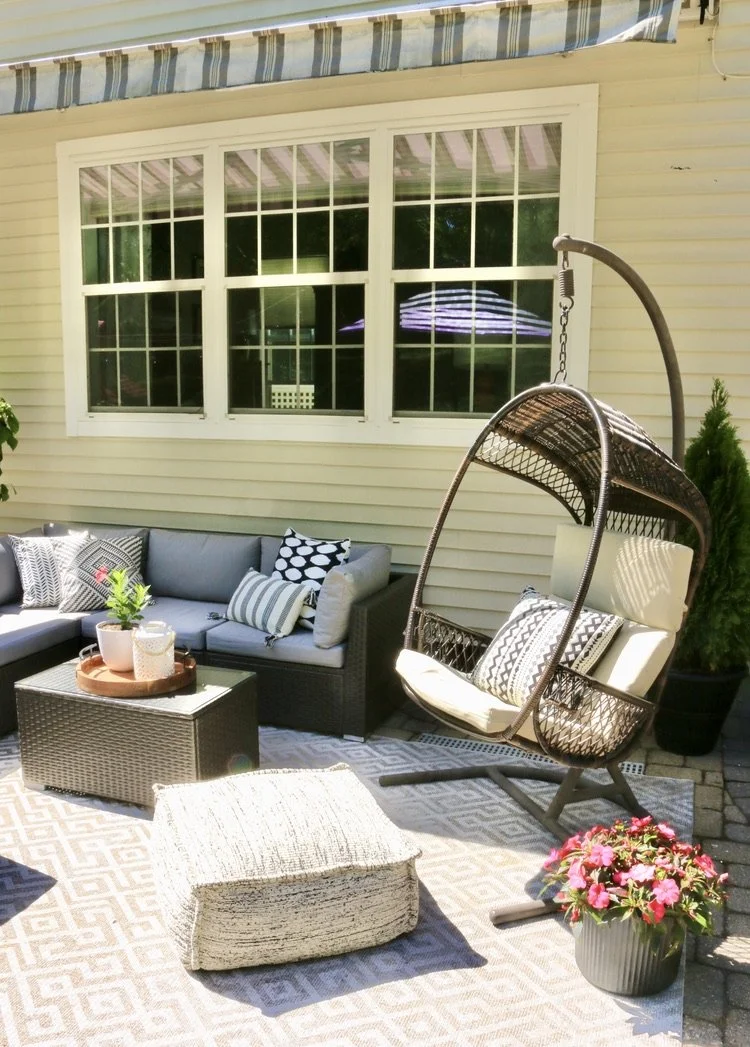8 Years, 8 Lessons
A Few of the Things I’ve Learned While Running My Own Interior Design Business
When I first decided to strike out on my own eight years ago, I wasn’t naïve about the fact that I still had a lot to learn about the world of design. After all, it’s sort of an ever-changing beast by default. Styles and tastes change. Trends come and go (and often come back again). Technology advances. In this industry you quickly learn to be comfortable with feeling like there’s always something new to learn. But that’s part of what keeps things interesting!
I begin each new project with fresh eyes, and can usually find creative inspiration just about anywhere. A piece of art. Nature. A favorite vacation destination. My client’s closet. Interior design never feels stale to me, and as an added bonus I get to be a lifelong learner while doing what I love in my own way.
While I know the artistic side of my design brain will continually evolve, there are so many other lessons I’ve learned over the years that have felt more like I was reaching some sort of milestone in my professional career. Like I was really sharpening the tools in my kit. Whether about running a business as an entrepreneur, communicating with my clients and professional partners, managing my first employee, or even simply about setting boundaries and practicing self-care — my learning has spanned well beyond things like mixing patterns and detailing kitchen cabinetry.
Here are some of the other lessons I’ve learned so far, in no particular order.
1. Follow-Up
Let me start by saying this isn’t always as obvious at it seems, and covers SO many different scenarios. Whether it’s double (or triple) checking an appointment with a tradesperson, a furniture delivery date, checking back in with an old lead who changed their timeline, or relaying important information to a client, a very large portion of my week is spent just following-up on things/with people. More time than I initially expected, as a matter of fact.
Recently, an important piece of dining room furniture that had been paid for months earlier suddenly dropped off of my order with no warning or context from the vendor. A quick phone call surfaced that the table had been discontinued after I had specified it, and unfortunately there was no more inventory to fulfill my order. Had I not followed-up, it would have been a very disappointing day for all of us when the chairs arrived without the table. Luckily, I was able to loop in the client and make a last minute swap to an alternate with minimal change to our timeline.
It can be exhausting to dedicate so much of my time to this kind of administrative work — and at times I feel like a bit of a nuisance to people I rely on and work with — but learning to dot all of my I’s and cross all of my T’s has saved me more than once. Learning to prioritize this degree of organization and attention to detail was not just an important lesson for me and my business, but it’s a lot of what a client pays for and expects when they hire an interior designer. Beyond just the pretty vignettes that fall out of my brain, I follow-up so they don’t have to. It’s as simple as that!
Hoodridge Residence (images coming soon!)
2. Trust Your Gut
No matter how much natural talent you’re born with, or education you gather, confidence in your abilities is simply something that grows over time. There is no shortcut. I think that’s true for just about every profession! But in my experience, feeling secure in my knowledge and ability when just starting out as a designer can be especially challenging.
From Netflix series, to coffee table books, magazines, blogs, social media, podcasts, etc. there is just SO MUCH media one can consume that’s dedicated to interior design. There’s no denying that we all love a splashy image of a beautiful room — but as inspiring as they may be, they can be somewhat of a trap, creatively.
While a simple solution would be to just stay in my lane, with blinders on, and ignore what everyone else is doing, I sort of have to be in the loop with what’s going on in the world of design (a little more on this topic in lesson #7). You just have to remind yourself that we’re all on professional journeys, and to not compare your beginning to someone else’s middle.
It may have taken some time — and more than a few anxiety-inducing conversations — but I have learned to trust my gut. My design instinct is sharp, and I know what I am doing.
3. Ask For Help
For things big and small, learning to be comfortable asking for help was a huge lesson for me. I don’t know if all designers are cut from this same cloth, and it’s just something that is inherent to our personalities, but I always seem to have a million plates spinning in the air, and usually thrive in that circumstance. It makes me feel a little bit like a superhero. But it’s also a trap!
Burnout is real, and even if I have incredibly high bandwidth, operating at maximum capacity for months on end just isn’t sustainable. In order to continually provide stellar client experiences and deliver high-quality, thoughtful design I had to get over my fear of looking underqualified, and learn how to ask for help. As well as learn that accepting help from other pros in my field (and neighboring specialties) doesn’t mean I’m failing, or dropping the ball.
It’s growth.
4. Feedback Isn’t Personal
You might not always get it right on the first go around. Sometimes not even on the second go around. And that’s totally fine!
Learning to put ego aside, and understanding that just because someone was drawn to the images on my website or Instagram and hired me to tackle their home doesn’t guarantee they’re going to love each and every aspect of my design for them.
Interior design is meant to be a collaborate process after all — and while it shouldn’t be personal for me, it IS incredibly personal for them. This is their home. Their safe space, and a place of respite for their family. Asking for a revision in their design plan isn’t a negative reflection on me/my abilities.
Sometimes a wallpaper pattern or light fixture just doesn’t quite land as I’d hoped. Silly as it may sound, that “No.” can actually be a hard pill to swallow, as a sensitive soul/artsy type. But that’s just part of the job. And the silver lining in all this is that my openness to receiving feedback has often won me repeat business! That’s called validation.
5. Lean On Your Community
This is sort of like “ask for help,” but with a significantly more hyperlocal/friends and family slant. Basically this has to do with me learning to accept that the people closest to me love me and want to support my business. Whether by simply hearing about how my projects are coming along, or standing by to sign for a delivery when I can’t be somewhere, or rolling up their sleeves for emergency install help, or letting me borrow their pick-up truck (hi, Dad), or even referring me to someone they know.
It truly takes a village, and that’s a special and beautiful thing. I’m not burdening my tribe by reaching out and inviting them in to participate in something that’s so important to me. I knew that it always felt like an honor whenever I was brought into someone else’s sphere — but strangely enough it was a lesson for me to recognize that the inverse was also true. The individuals closet to me wanted to be brought in. They wanted to feel close to me and my work.
I think it’s worth noting that this was a particularly hard lesson to remember when everything blew up over the last few years. Everyone’s stress was at an all time high, and the last thing I wanted to do was add to anyone’s plate. But in reality, most people were happy just to have some sort of distraction from their typical daily grind.
6. Honesty Is the Best Policy
As an entrepreneur, one of the core values that I try to run my business with is integrity. This is a challenging and at times complex industry. Whether I’m working with vendors to get the details and measurements for a custom pieces just right, or with a contractor to troubleshoot a surprise issue in real-time at the job site, there are inevitably going to be a few issues that arise. Things can get overlooked on all sides. Mistakes get made. We’re all human.
Being honest, and proactive about communicating these hiccups to my clients is always my approach. I also work hard to come to them with a solution already in mind, and always make time to explain things fully and clearly. Thankfully, people are often understanding.
99% of the clients I’ve worked with have approached our relationship from a place of open communication and trust, and it’s been a wonderfully rewarding experience to design their homes.
7. Design is What I Do — Not Who I Am
When you’re self-employed, especially in a service industry, boundaries are essential in preventing work from creeping in and taking over all aspects of your life. My personal opinion is that this is particularly challenging in interior design because there seems to be a unspoken rule floating around the design community that if you don’t eat, sleep, and breathe design than you’re failing not only yourself, but your clients as well!
There’s seems to be a little bit of a myth that in order to run a successful interior design business, you must:
Follow and engage with each and every celebrity designer on social media.
Stay abreast of all of the latest trends even if they don’t fit your brand/aesthetic.
Go to market multiple times each year and study the catalogs of every furniture and décor brand.
Join professional design organizations and attend their events, including having a mentor and a mentee.
Buy and read whichever new design book drops each month, listen to every design podcast, and watch every design webinar.
Maintain a blog (wink).
I could go on about the formula, but the point I’m making is that balance is essential. I’m a multi-faceted individual with hobbies, interests, and an entire LIFE outside of design! I feel that maintaining some sort of identity besides my work and learning to stay in my lane has not only improved my quality of life, but has actually made my design even better. The whole point of being an entrepreneur is that I get to decide exactly how to show up to the party, right?
The surprise bonus side effect is that this practice has also allowed me to offer more grace and understanding to others. Life happens for all of us. Trades, vendors, and even clients just the same. We’re all just out here trying to the best we can with what we’ve been given. Learning to play to my strengths instead of burying myself under a never-ending onslaught of self-improvement was a lightbulb moment for me, and for my business.
8. Follow My Process
It’s there for a reason!
Of all of the lessons I’ve learned so far, this one may be the hardest to put into practice day-to-day. While I’m extremely organized and detail oriented, the free spirit in me loves to just live in the moment and go with the flow. I know, however, that my business thrives and my work is more efficient — and ultimately, more enjoyable — with a little bit of routine and structure.
The fast-paced nature of the design industry is the very thing that makes it a challenge to keep this lesson in mind. Each day and week’s work is a little bit different. While projects may be similar, each home and family I work with are totally unique. As much as I like to operate my business within a manageable world of systems and processes, I can’t be too rigid — but that’s one of the things I love most about being a designer!
Often times, clients, contractors, or other collaborators need my immediate attention in order for the project to move forward smoothly. That’s just a reality of the work! But as a recovering people pleaser, it can be tempting to allow even those more minor/less urgent distractions to derail the entire plan for my day.
When my business grew to the size that I could add a design assistant, the surprise benefit (in addition to increasing my bandwidth to put out those surprise fires) was that I had another person around who’s day-to-day is also more efficient and enjoyable when I stick to my process. Having them around helps remind me that it’s not just my clients and project partners that I need to be accountable to, but to myself as well.
Does your space need some professional help? Schedule a free Discovery Call with our team today to talk about your next design project!








